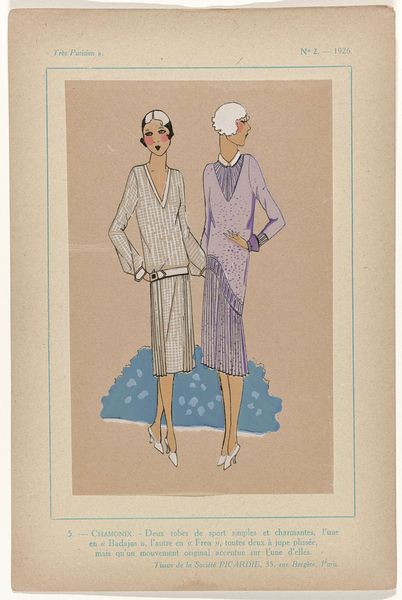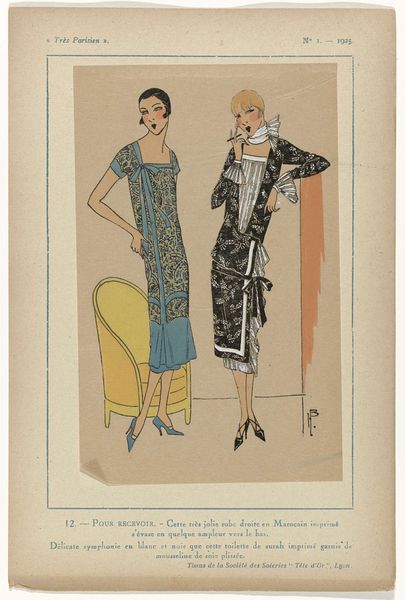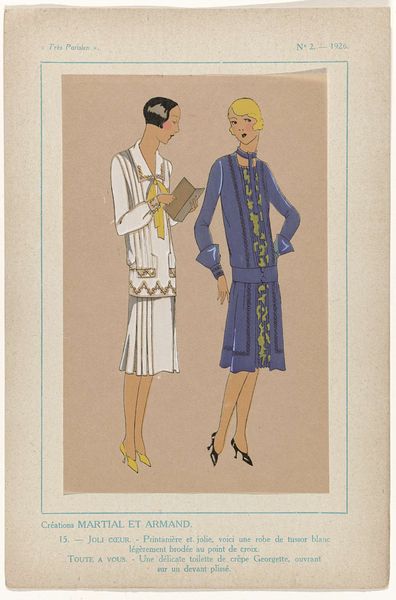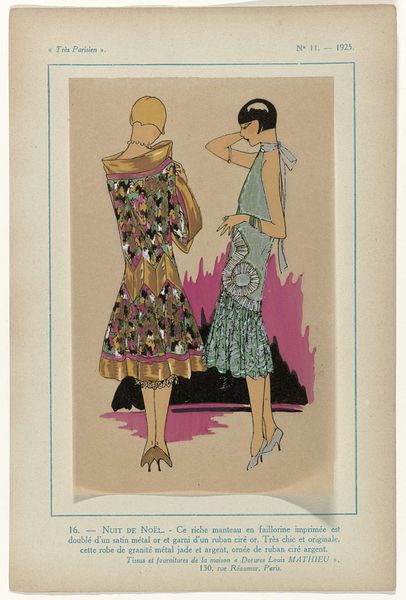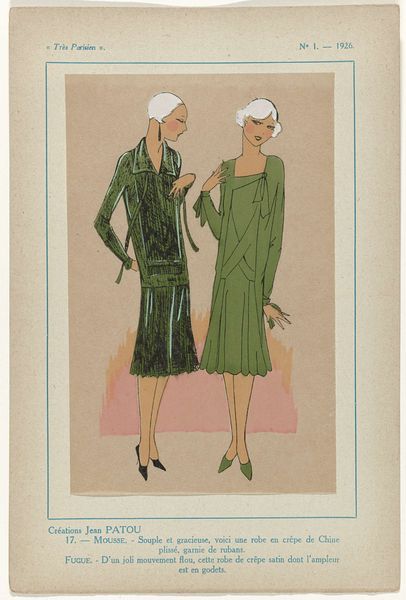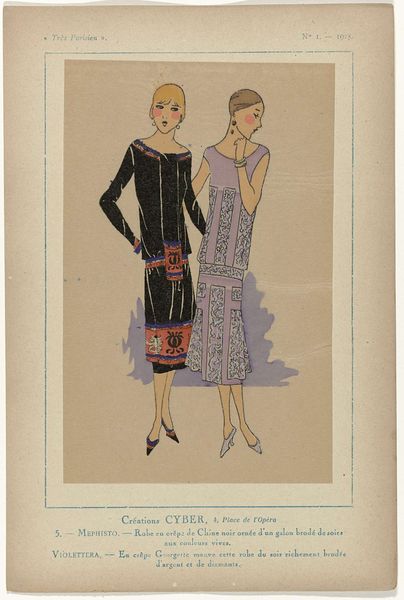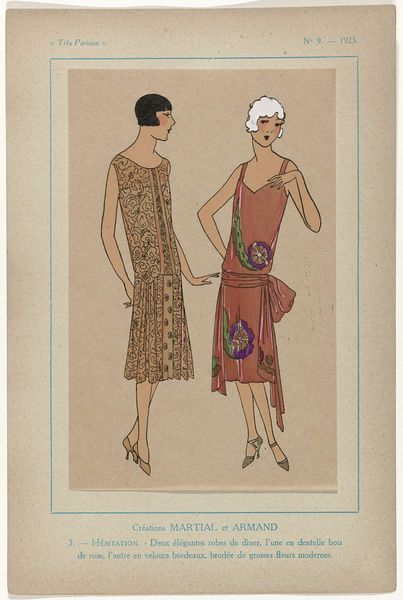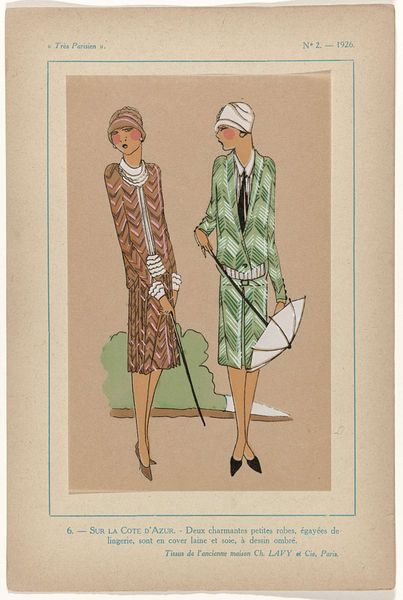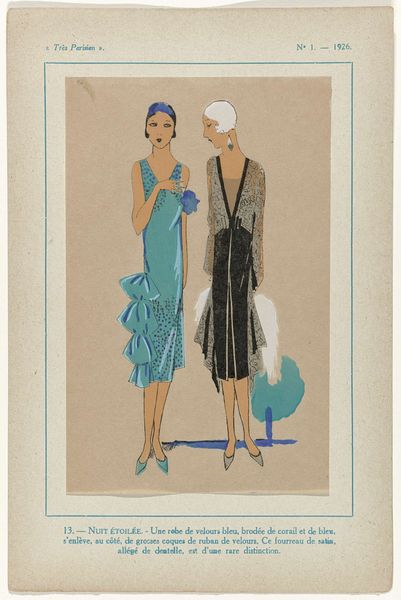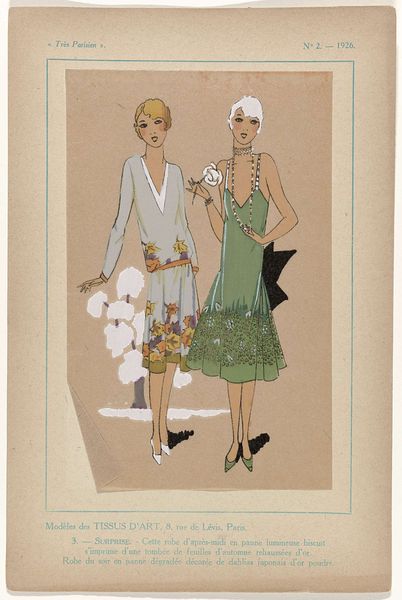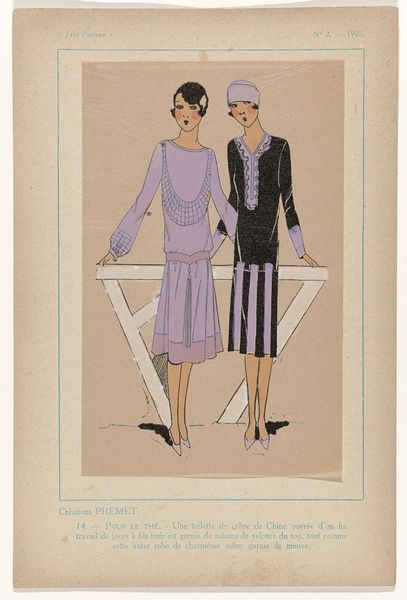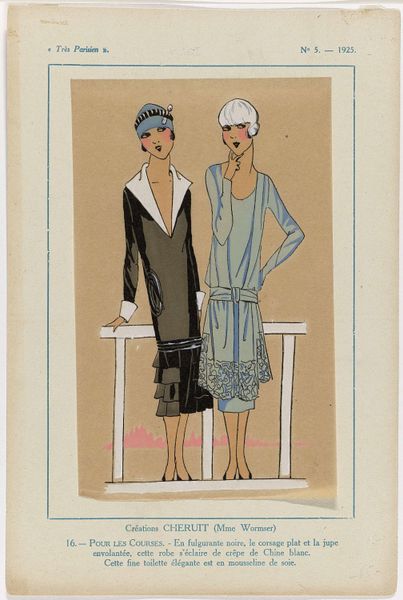
watercolor
#
portrait
#
art-deco
#
figuration
#
feminine colour palette
#
watercolor
#
flat colour
#
historical fashion
#
watercolour illustration
Dimensions: height 195 mm, width 120 mm, mm
Copyright: Rijks Museum: Open Domain
Curator: G-P. Joumard’s “Très Parisien. La Mode, Le Chic, L’Elégance,” created in 1925, offers us a glimpse into the stylish world of Art Deco Paris. Executed in watercolor, this piece currently resides in the Rijksmuseum. Editor: My immediate impression is that it’s… well, overtly feminine, from the color palette to the slender, elongated forms of the figures. There’s an interesting flattening of perspective at play. The spatial relations are implied but not truly delivered. Curator: Yes, precisely. Observe the geometry. The lines are clean, decisive. The shapes, especially in the dresses, favor geometric patterns, simplified forms that really define the Art Deco movement. Note the carefully calibrated balance between line, color, and form, how they contribute to the work’s visual harmony and unified design. Editor: I'm struck by the way these women, with their bobbed hair and nonchalant poses, embody the modern woman of the era, shedding Victorian constraints for something more daring. The dresses themselves—the pink plaid, the fringed green—feel like emblems of liberation, visual cues to cultural shifts towards increased agency and freedom. Curator: Indeed, we see semiotic codes of modernity at work. The use of watercolor softens the strong geometries slightly. The contrast creates visual tension; we’re presented with figures representative of both boldness and refined gentility. Editor: Absolutely. This wasn't just about aesthetics; it was about projecting a new vision of womanhood. The ‘garçonne’ look was much more than mere surface, it was signalling changes to social roles, behaviours, even assumptions about the possibilities open to women. I keep noticing those simple accessories, too—bracelets, heels, subtle accents underscoring confidence. Curator: A superb analysis! Joumard skillfully utilizes flatness, line, and a vibrant color harmony to encapsulate not only the style, but also the evolving cultural fabric of his time. Editor: It leaves us contemplating the cyclical nature of fashion and cultural identity. Are we not always dressing ourselves in signs, consciously or not, telegraphing stories through what we choose to wear?
Comments
rijksmuseum about 2 years ago
⋮
Très Parisien promoted itself as chic and elegant. Between 1920 and 1936 it presented creations by such couturiers as Chéruit, Premet, Philip et Gaston, and Lanvin. The young, svelte models are all ultra-modern, shown talking on the phone, smoking and playing tennis. The illustrations also show that over the course of the 1920s, skirt lengths had risen to just below the knee, before dropping back down to calf length in the 1930s. The small plates were printed on transparent paper using a stencilling technique known as en pochoir and then hand coloured; many of them are unsigned. The signature ‘Joujou’ belonged to Germaine Paule Joumard, who was the director of Très Parisien, as well as one of the magazine’s illustrators.
Join the conversation
Join millions of artists and users on Artera today and experience the ultimate creative platform.
